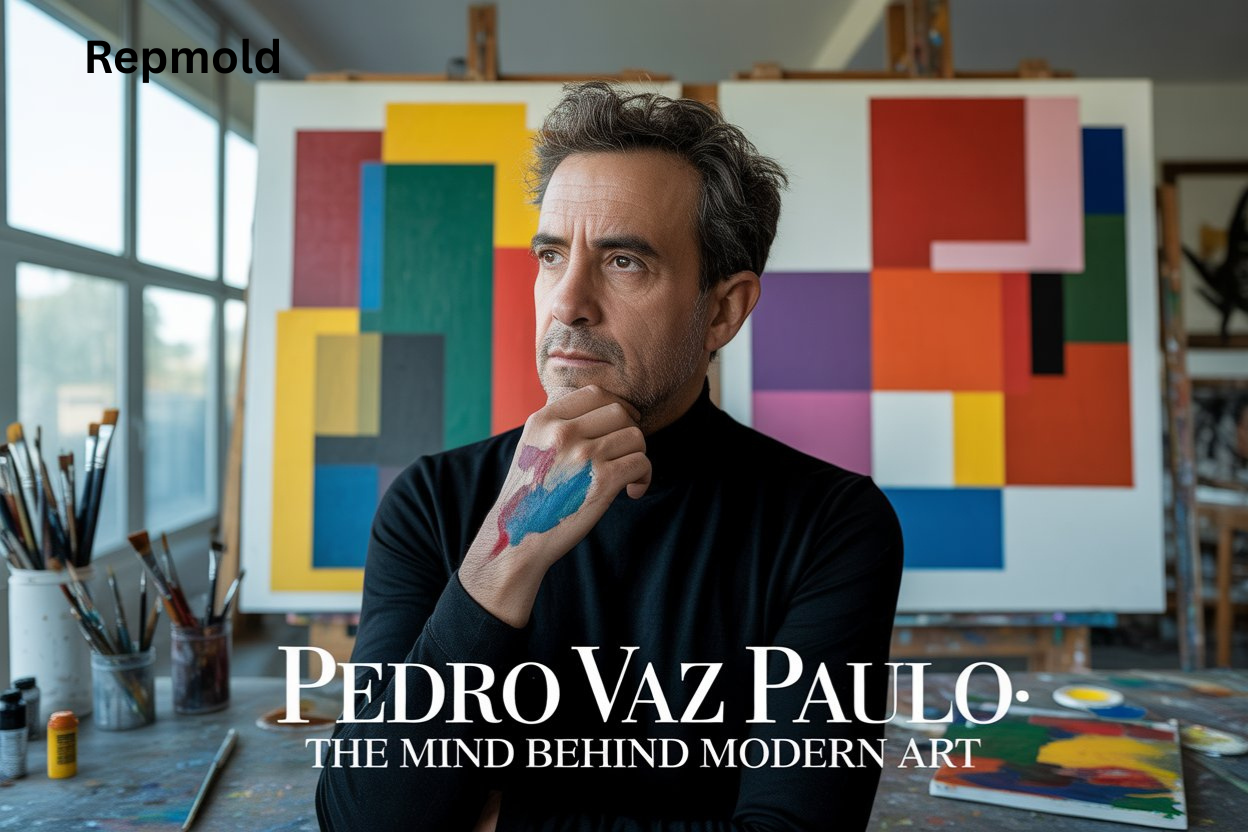Introduction – The Visionary Shaping Modern Creativity
Pedro Vaz Paulo stands as one of the most influential voices in modern art. His vision blends creativity, emotion, and purpose into a single powerful message. Through his words and works, he encourages artists to see art not just as creation but as connection. Today, his artistic philosophy continues to inspire a new wave of contemporary creators.
In every era, art evolves. Yet, few artists shape that evolution as deeply as Pedro Vaz Paulo. His thoughts challenge traditional boundaries and invite artists to think beyond the canvas. Moreover, he reminds the world that art is not only about technique but about the story it tells and the emotions it awakens. Because of this, his ideas continue to influence painters, sculptors, designers, and digital artists across the globe.
Many artists today follow his belief that “true art is born from emotion.” They use his guidance to express personal truth, social reflection, and human connection. As a result, Pedro’s influence can be felt in countless modern movements that value simplicity, honesty, and emotional depth.
In this article, readers will discover the core of Pedro Vaz Paulo’s artistic mindset. You will learn how his philosophy transforms creativity into a dialogue between the artist and the audience. You will also explore how his ideas about emotion, simplicity, and innovation have reshaped the landscape of modern art. By the end, you’ll understand why Pedro Vaz Paulo is truly the mind behind modern creativity—an artist whose thoughts continue to guide the future of expression.
Who Is Pedro Vaz Paulo?
Pedro Vaz Paulo is a creative visionary known for reshaping how the world views modern art. Born with a deep passion for color, texture, and storytelling, he grew into an artist who connects emotion with imagination. Over time, his name became a symbol of innovation and bold artistic thinking.
From an early age, Pedro found inspiration in nature, human emotion, and everyday life. He believed that beauty exists in the simplest forms, waiting to be discovered. These early influences helped him develop a unique artistic voice that blends meaning with visual harmony.
As his career evolved, Pedro moved beyond traditional techniques. He embraced innovation, digital tools, and new materials to expand artistic expression. Today, his journey reflects the perfect balance between classical creativity and modern experimentation—proving that true art evolves while staying true to its soul.
Pedro Vaz Paulo’s Artistic Philosophy
Pedro Vaz Paulo believes that art is more than creation—it is communication. His famous quote, “Art is not a creation but a conversation between the creator and the world,” defines his entire philosophy. He views every piece of art as a dialogue where emotions, ideas, and stories meet the observer’s imagination.
Through this belief, Pedro redefines creativity. He encourages artists to express genuine feelings rather than simply produce beautiful works. For him, true creativity begins when emotion drives expression and connection replaces perfection. His art teaches that meaning grows stronger when shared with others.
Moreover, Pedro’s philosophy gives art a clear purpose. It transforms art into a bridge that links human experiences across cultures and generations. This approach resonates deeply with modern artists and audiences alike because it values authenticity, emotion, and human connection over trends or technique.
Emotion as the Heart of Art
Pedro Vaz Paulo often said, “True art is born from the depths of emotion.” This belief reflects his view that art must speak from the heart to truly matter. He saw emotion as the foundation of creativity and the most powerful way to connect with others.
Through emotion, art becomes more than visual beauty—it becomes human experience. When an artist paints with feeling, every stroke carries a story. Viewers sense the joy, pain, or hope behind the work. This emotional honesty builds an invisible bridge between the creator and the audience, making each piece feel alive and personal.
Today, many modern artists follow this principle. They use color, form, and expression to reflect real emotions. From abstract paintings to digital art, they echo Pedro’s idea that emotion gives art its soul. Without feeling, art may exist—but it cannot truly speak.
Simplicity and Innovation in Art
Pedro Vaz Paulo once said, “Simplicity in art is not the absence of complexity, but the mastery of it.” Through this belief, he reminded artists that simplicity is not about doing less—it is about doing it with purpose. True simplicity means understanding complexity so well that every detail feels essential and meaningful.
In his philosophy, simplicity and innovation walk hand in hand. He encouraged artists to remove what distracts and focus on what speaks. By combining clear design with modern tools, he showed that innovation can exist within restraint. His approach helped bridge traditional art with new digital expressions, inspiring balance between thought and technology.
Many minimalists and digital creators today follow this path. They blend clean design, emotion, and modern techniques to express powerful ideas. Through them, Pedro’s vision continues to shape the future of minimalist and digital art worldwide.
Collaboration and Cultural Impact
Pedro Vaz Paulo believed, “Art grows when minds meet and ideas collide.” This simple yet powerful thought reflects his deep faith in collaboration. He saw teamwork not as compromise but as a source of new energy and creativity. When artists share ideas, they discover fresh perspectives that one mind alone might miss.
Collaboration, in his view, pushes art to evolve. It mixes skills, styles, and stories, giving birth to unique forms of expression. Pedro encouraged artists to work together across disciplines—combining painting with music, sculpture with technology, or film with design. Through such blending, art becomes more dynamic and alive.
His ideas also promote cultural diversity and unity. He believed every culture adds a new color to creativity. By supporting cross-media and multicultural projects, Pedro inspired artists to celebrate differences while finding common ground. As a result, his philosophy continues to shape a more inclusive and innovative art world today.
The Timeless Nature of Art
Pedro Vaz Paulo once stated, “Art is timeless; it exists as long as it is viewed.” This quote beautifully captures his belief that art lives through the eyes and hearts of people. For him, the true life of art begins when someone connects with it. Every viewer adds meaning, keeping the artwork alive across generations.
In today’s world, digital media strengthens this timeless connection. Technology allows artists to share their creations instantly with audiences everywhere. Online galleries, virtual exhibitions, and social platforms preserve art beyond physical limits. Through these modern tools, masterpieces can inspire people far from their original home, ensuring art never fades.
Pedro’s philosophy remains deeply relevant in our global art culture. His vision encourages artists to merge tradition with technology. By embracing digital creativity, they continue his mission—making art eternal, accessible, and alive in every corner of the world.
Inspiring Future Generations
Pedro Vaz Paulo’s influence extends far beyond his own creations. He is also a mentor who believes that the future of art depends on nurturing young minds. Through his words and guidance, he encourages emerging artists to express their individuality with confidence and purpose. His belief that “creativity belongs to those who dare to see differently” continues to inspire countless dreamers around the world.
Many educational and creative programs now follow his philosophies. Art schools and workshops include his teachings in their lessons, helping students understand emotion, simplicity, and innovation. These programs motivate young artists to explore, experiment, and find their unique artistic voices.
Pedro’s legacy shapes the next generation of creators who view art not just as skill, but as self-expression. His mentorship plants the seeds of curiosity and courage, ensuring that creativity continues to grow with every new artist who picks up a brush, pen, or digital tool.
Pedro Vaz Paulo’s Enduring Legacy
Pedro Vaz Paulo’s legacy stands as a lasting symbol of creativity, emotion, and vision. His contributions to art go far beyond his works—they reshape how the world understands expression. Through his unique philosophy, he turned art into a conversation between the artist and society. He championed emotion, simplicity, and innovation as the true forces behind meaningful creation.
Even in today’s fast-changing creative landscape, his ideas remain deeply relevant. Artists continue to draw from his principles to balance tradition with modernity. His influence can be seen in digital art, minimalism, and collaborative projects that celebrate diversity. Every generation finds new value in his timeless insights about creativity and human connection.
Ultimately, Pedro Vaz Paulo remains “the mind behind modern art.” His thoughts continue to inspire, reminding artists everywhere that true art is not just made—it is felt, shared, and remembered forever.
Conclusion – Art That Speaks Beyond Time
Pedro Vaz Paulo’s influence reaches deep into the heart of emotional, cultural, and conceptual art. His ideas remind the world that creativity is not limited by time or form. Instead, it is shaped by emotion, connection, and truth. Through his philosophy, artists have learned to express feelings that words cannot capture and to create works that move hearts across generations.
His vision continues to guide modern creators toward authenticity and purpose. He teaches that art should not only be seen but also felt and understood. By combining simplicity with innovation, he showed that every artist holds the power to inspire change and reflection.
Ultimately, Pedro Vaz Paulo’s message is timeless—art is the mirror of humanity. It reveals who we are, what we feel, and how we grow. Through this truth, his legacy continues to speak beyond time.

